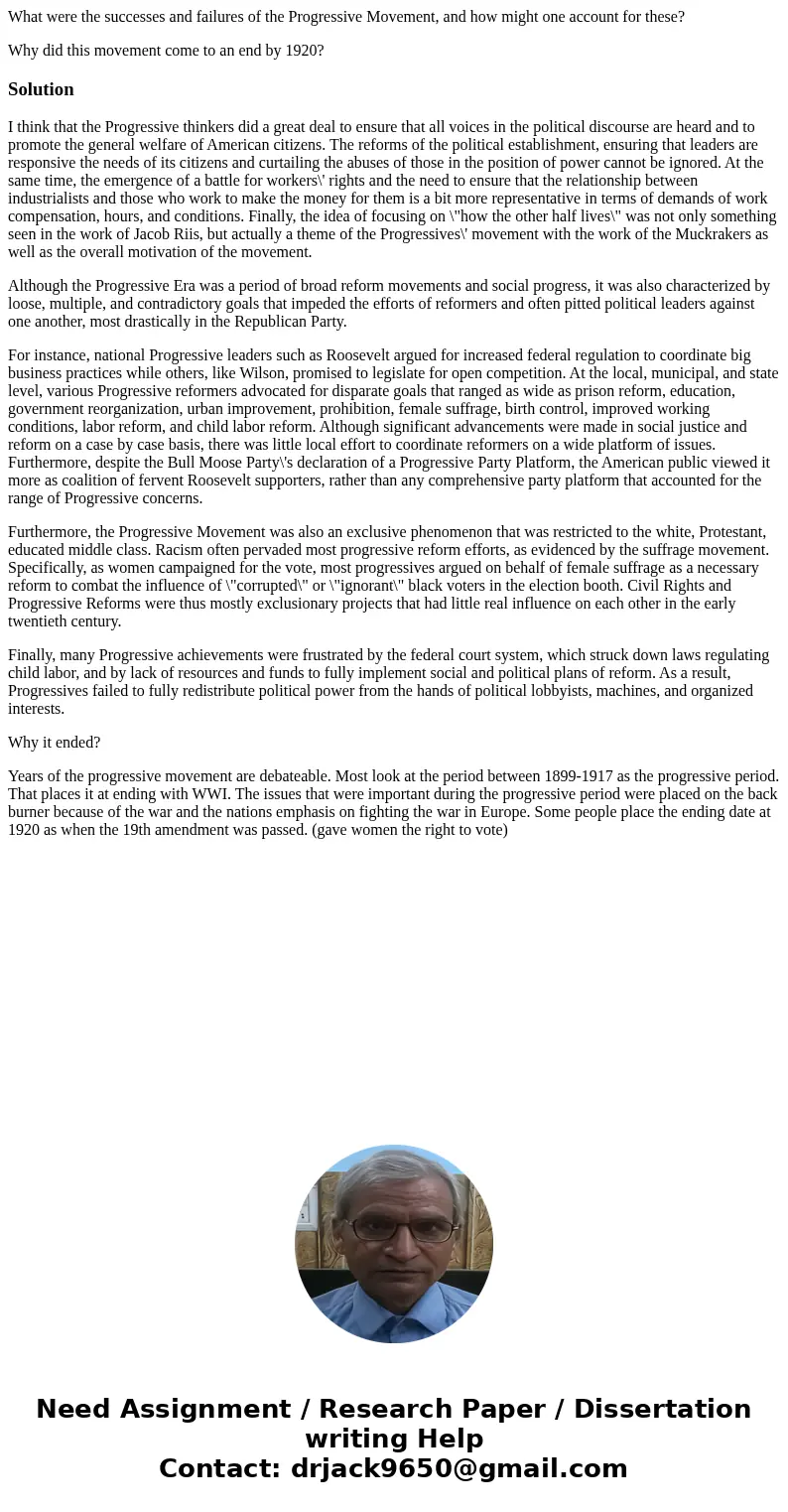What were the successes and failures of the Progressive Move
What were the successes and failures of the Progressive Movement, and how might one account for these?
Why did this movement come to an end by 1920?
Solution
I think that the Progressive thinkers did a great deal to ensure that all voices in the political discourse are heard and to promote the general welfare of American citizens. The reforms of the political establishment, ensuring that leaders are responsive the needs of its citizens and curtailing the abuses of those in the position of power cannot be ignored. At the same time, the emergence of a battle for workers\' rights and the need to ensure that the relationship between industrialists and those who work to make the money for them is a bit more representative in terms of demands of work compensation, hours, and conditions. Finally, the idea of focusing on \"how the other half lives\" was not only something seen in the work of Jacob Riis, but actually a theme of the Progressives\' movement with the work of the Muckrakers as well as the overall motivation of the movement.
Although the Progressive Era was a period of broad reform movements and social progress, it was also characterized by loose, multiple, and contradictory goals that impeded the efforts of reformers and often pitted political leaders against one another, most drastically in the Republican Party.
For instance, national Progressive leaders such as Roosevelt argued for increased federal regulation to coordinate big business practices while others, like Wilson, promised to legislate for open competition. At the local, municipal, and state level, various Progressive reformers advocated for disparate goals that ranged as wide as prison reform, education, government reorganization, urban improvement, prohibition, female suffrage, birth control, improved working conditions, labor reform, and child labor reform. Although significant advancements were made in social justice and reform on a case by case basis, there was little local effort to coordinate reformers on a wide platform of issues. Furthermore, despite the Bull Moose Party\'s declaration of a Progressive Party Platform, the American public viewed it more as coalition of fervent Roosevelt supporters, rather than any comprehensive party platform that accounted for the range of Progressive concerns.
Furthermore, the Progressive Movement was also an exclusive phenomenon that was restricted to the white, Protestant, educated middle class. Racism often pervaded most progressive reform efforts, as evidenced by the suffrage movement. Specifically, as women campaigned for the vote, most progressives argued on behalf of female suffrage as a necessary reform to combat the influence of \"corrupted\" or \"ignorant\" black voters in the election booth. Civil Rights and Progressive Reforms were thus mostly exclusionary projects that had little real influence on each other in the early twentieth century.
Finally, many Progressive achievements were frustrated by the federal court system, which struck down laws regulating child labor, and by lack of resources and funds to fully implement social and political plans of reform. As a result, Progressives failed to fully redistribute political power from the hands of political lobbyists, machines, and organized interests.
Why it ended?
Years of the progressive movement are debateable. Most look at the period between 1899-1917 as the progressive period. That places it at ending with WWI. The issues that were important during the progressive period were placed on the back burner because of the war and the nations emphasis on fighting the war in Europe. Some people place the ending date at 1920 as when the 19th amendment was passed. (gave women the right to vote)

 Homework Sourse
Homework Sourse